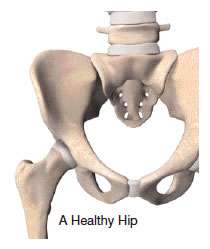Total Hip Joint Replacement
You Don’t Have to Live With Joint Pain
Your joints are involved in almost every activity you do. Simple movements such as walking, bending, and turning require the use of your hip and knee joints. Normally, all parts of these joints work together and the joint moves easily without pain. But when the joint becomes diseased or injured, the resulting pain can severely limit your ability to move and work. Osteoarthritis, one of the most common forms of degenerative joint disease, affects an estimated 43 million people in the United States.1 Whether you are considering a total joint replacement, or are just beginning to explore available treatments, this website is for you. It will help you understand the causes of joint pain and treatment options. Most importantly, it will give you hope that you may be able to return to your favorite activities.
Once you’re through reading this website, be sure to ask your doctor any questions you may have. Gaining as much knowledge as possible will help you choose the best course of treatment to relieve your joint pain — and get you back into the swing of things.

What Is a Hip Joint?
Your hip joint is a ball-and-socket joint, formed by the ball, or femoral head, at the upper end of the thighbone, and the rounded socket, or acetabulum, in the pelvis. The bone ends of a joint are covered with a smooth, tough material called cartilage. Normal cartilage cushions the bones and allows nearly frictionless and pain-free movement. The rest of the surfaces of the joint are covered by a thin, smooth tissue lining called the synovium. The synovium produces fluid that acts as a lubricant to reduce friction and wear in the joint.
What We Treat